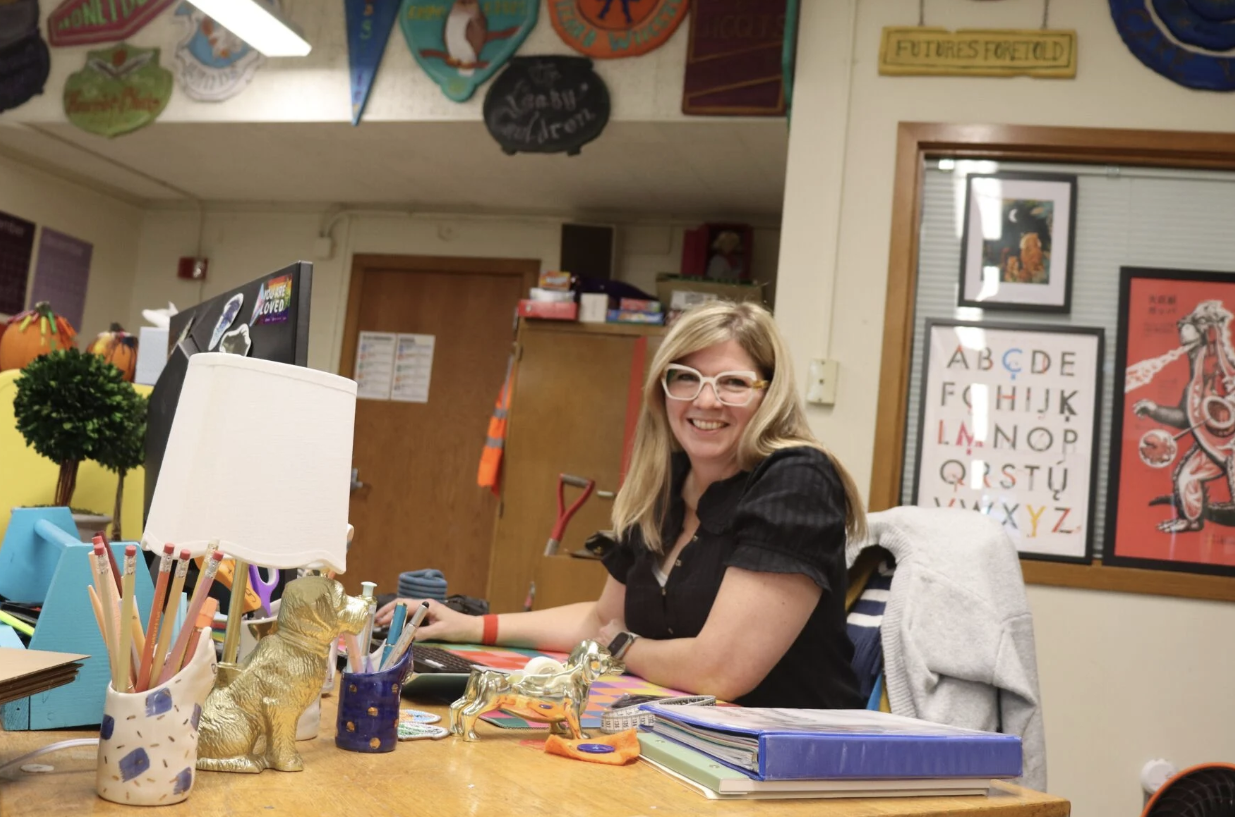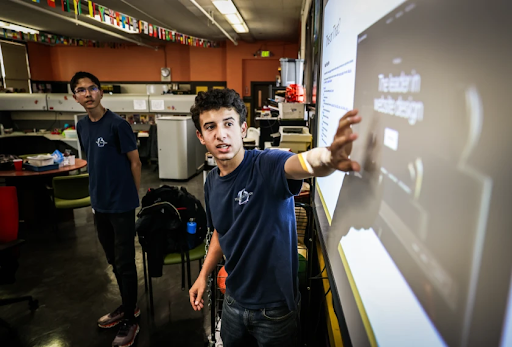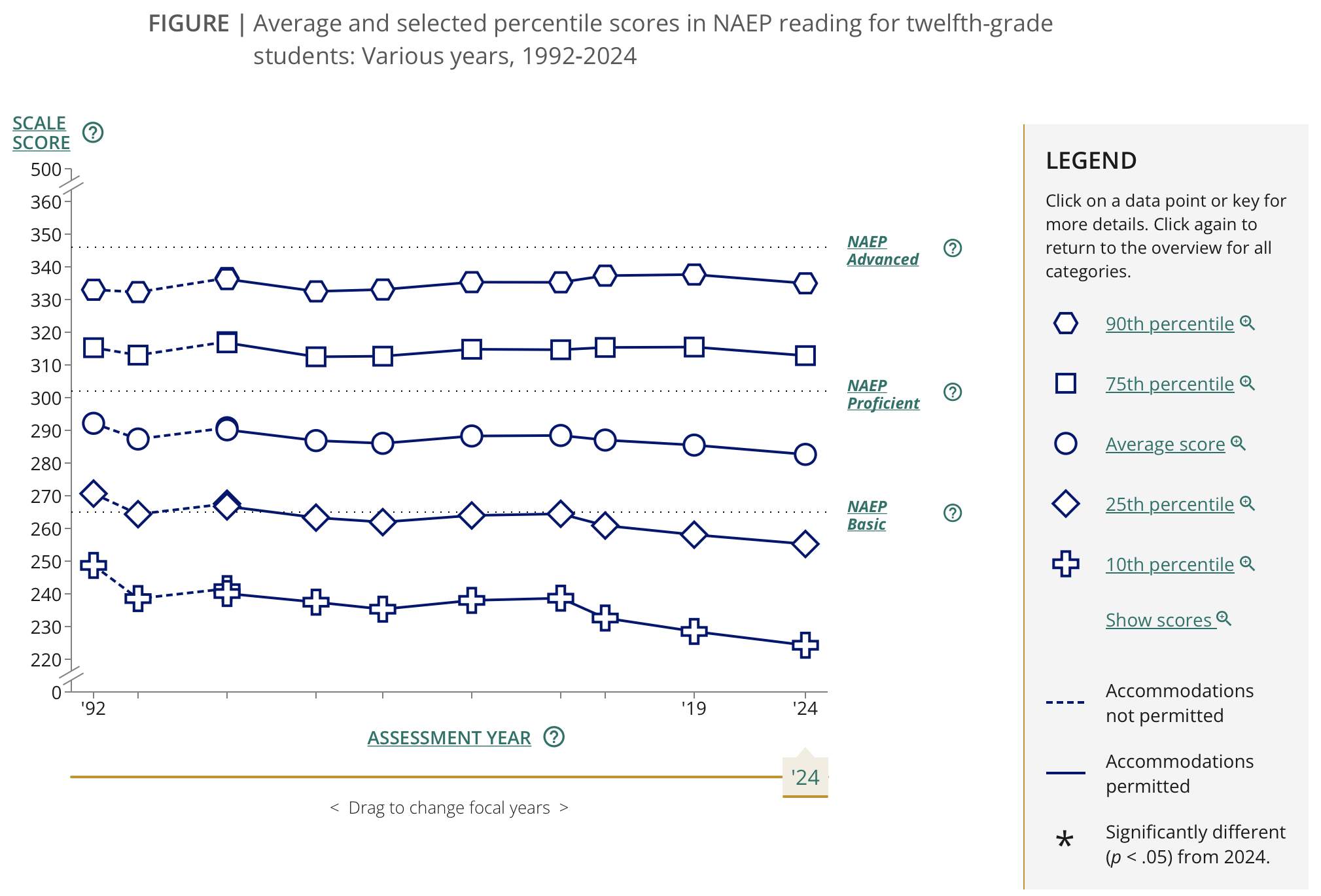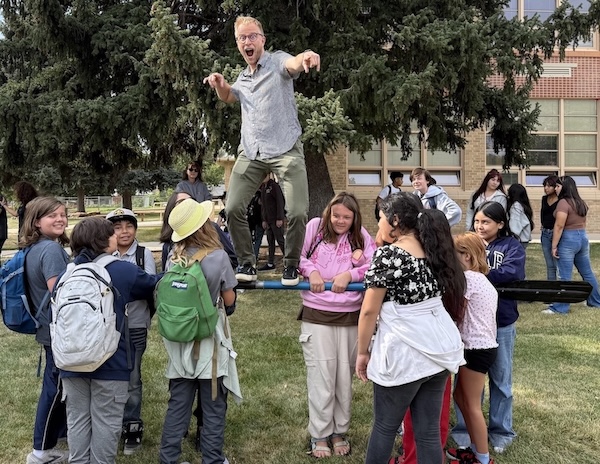Jump to: Top Tasks | From the Field | Key Resources | Moments of Resilience
It is week 282 in our new reality and we are thinking about public school enrollment, fertility rates and school choice.
“Two-thirds of traditional public schools lost enrollment between 2019 and 2023, according to federal data,” writes Dana Goldstein in a new article for the New York Times. One reason is the increased competition from alternatives to traditional public schools: charter schools, private schools, microschools and homeschooling are all on the rise, fueled in part by policy changes that put more money and control in the hands of parents.
SUBSCRIBE
“The monopoly is over,” is how Brian Stephens, CEO of the student enrollment consulting firm Caissa K12, put it to Goldstein.
You might be left with the impression that the growth of school choice programs in red states would mean that they are more likely to be the places where public school enrollment is in decline. But curiously that’s not what FutureEd’s Tara Moon found when she dug into the data. Since 2019, public school enrollment shrank dramatically in large blue states like New York (-5.9%) and California (-5.2%), while it actually increased in large red states like Florida (0.5%) and Texas (0.7%). “In theory, fewer students could mean more resources per child, especially in districts where local revenue remains stable,” Moon writes. “But in practice, much of that funding is absorbed by the inefficiencies of operating under-enrolled schools, making them costly to run.”
What’s going on?
Here’s how Moon explains it: “Family choices aren’t the sole or likely even primary driver of the decline. The U.S. birth rate has fallen steadily for more than a decade—from 2.1 children per woman in 2007 (replacement level) to just under 1.6 in 2024, the lowest in U.S. history. That means fewer possible children entering the education system each year. Between 2010 and 2020, for example, the number of children under five fell by 1.8 million nationwide, from 20.2 million to 18.4 million. That shrinking pipeline is now reaching classrooms.” And that pipeline of children varies dramatically between states both because of differences in birthrates and because some states are doing a better job of attracting families with young children than others.
Public schools in high-cost areas like California and New York should be more worried about the way high taxes and high housing costs are driving families out or discouraging people from having kids than the risks from a new school choice program. Indeed, it may be that having a robust school choice system is a draw for young families, as these programs regularly poll well with parents.
In that case, as California parent and Clinton Administration alum Ben Austin argues in a new episode of Fordham’s Education Gadfly Show, good policy and good politics could go hand in hand: “we’ve all been gaslit for the last 10 years by the Randi Weingartens of the world that somehow swing voters … support choice and freedom for everything except schools” but poll after poll shows that’s not true. Ben concludes his review of the election results: “Democrats who win are reformers.” A robust reform agenda in blue states to compete for families, which combines affordability with school choice, may be just what it takes to win elections and reverse these declines.
Last time, in the New Reality Roundup we looked at changes happening to summer school that have led to an explosion in popularity and attendance. We also looked behind the curtain at a new law in Georgia that has broken up a seven-year logjam in charter approvals. This week, we take stock of a fight over the federal tax credit in North Carolina and showcase some of the unique opportunities available to kids as a result of an expanding investment in summer.
And finally, 50CAN VP of Policy Liz Cohen has a new piece in The 74 Million that looks at unequal expectations from schools for summer reading, with vast discrepancies between school types. “If there’s one institution that can make teenagers read, it’s school,” Liz writes. “And if there’s one time of year when teens have ample time on their hands, it’s summer.”
TOP TASKS
Take the lead, rather than waiting, to secure federal tax credit dollars
Marcus Brandon, Executive Director of CarolinaCAN, is hard at work trying to put kids first in the midst of another fight between the General Assembly and the Governor over school choice. Having last weathered the storm two years ago, when then-Governor Cooper vetoed the North Carolina Opportunity Scholarship and forced an override by the Assembly, the same pattern is now playing out with the new federal tax credit, which could dramatically expand options for North Carolina students at no cost to the state.
The decision over whether to join the new federal program is up to state leaders, and Marcus worried that Governor Josh Stein was positioned to reject the federal dollars rather than make them available to families. Working with champions in the General Assembly, including Senator Philberger, last week CarolinaCAN and their partners helped pass House Bill 81, the Educational Choice for Children Act.
If signed into law, the bill would make North Carolina the first state in the country to enroll in the federal tax credit program. “From being part of the fight to establish North Carolina’s Opportunity Scholarship to working on expanding the program and moving kids off the waiting list, I’ve spoken with so many families who are looking for the resources to make a different choice in education,” Marcus told us. “The federal tax credit dollars could be a difference maker for a lot of families, and I didn’t want politics taking that opportunity away from them.”
Late last week, Governor Stein didn’t reject the goal of the bill but still vetoed the Educational Choice for Children Act, stating, “Once the federal government issues sound guidance, I intend to opt North Carolina in so we can invest in the public school students most in need of after school programs, tutoring, and other resources. Therefore, HB 87 is unnecessary, and I veto it.”
Marcus isn’t waiting around to see if that promise plays out: “The lawmakers I’m speaking to are looking forward to taking this up when they return from recess at the end of the month, and we’ll be working with them toward an override.”
The fight in North Carolina may be just one of the many to come as states consider the new federal tax credit. Reporting for Stateline, Robbie Sequeria, outlined the dynamics: “For progressives and education advocates who are wary of school vouchers, the decision is fraught. Opting in could draw criticism for approving what many see as a vehicle for privatization of K-12 education. But opting out could mean turning down federal dollars — education money that states with budding or robust private school voucher infrastructures, such as Arizona and Florida, will gladly take.”
What’s next for CarolinaCAN? First is ensuring that House Bill 81 becomes law. “I expected a veto,” Marcus told us, “Just like we had a veto for the Opportunity Scholarship. So we’ll do that dance again, but I feel confident in the General Assembly’s commitment to bringing these dollars to North Carolina’s families.” In addition, Marcus and his partners are continuing to work on legislation that will allow private school students to play sports at public schools and anticipates the Assembly taking up that work when they return at the end of the month.
THE TASK OF THE WEEK IS
Expand Summer
The changing face and continued evolution of summer programming is on display everywhere you look right now, with more models emerging to serve students based on their specific interests and needs.
Last week, Bloomberg Philanthropies shared good news about the impact of the Summer Boost program: across over 450 participating schools, students gained five weeks of extra learning in math and two weeks of extra learning in ELA. This is the second year in a row that students have made significant summer gains as a result of participation.
Another great example of summer success comes from a program focused on New York City’s homeless students. Camp Homeward Bound is an afterschool and summer program run by the Coalition for the Homeless. The overnight camp, which runs for three weeks in the Hudson River Valley, offers students hiking, boating and nature activities many have never experienced before.
“People think of them as downtrodden kids that have no future,” Camp Director Bev McEntarfer told the New York Times. “They just need to have their world opened up so that they know what their future can be.”
Or take Girls Rock Vegas, a girls camp in Nevada that matches students with guitars, basses and drum sets and has them learning the instruments while making new friends and bandmates. Hosted at Nevada Prep Charter School, the majority of the camp’s instructional faculty were once Girls Rock campers themselves, proof positive that the early exposure to music has been carried forward through their lives.
And for the nation’s squires and wizard apprentices, Massachusetts’ LARP (Live Action Role Playing) Adventure Program builds teamwork by having their campers work in collaborative adventuring parties to overcome threats the counsellors have set up for them to conquer. “LARP has always attracted a specific type of community — it’s always been the people who are on the margins and the outskirts and they’re using LARP to empower themselves, create something with other people, or figure out who they are,” counselor and marketing coordinator Elle Dunne told Vox.
THE TASK OF THE WEEK IS
FROM THE FIELD
Two of HawaiiKidsCAN’s youth advocates, Amelia and Mele, were sworn onto the Hawaii State Youth Commission last week by Lt. Governor Sylvia Luke and Sen. Stanley Chang. As members of the commission, the students will advise the governor and lawmakers on how policies will affect kids across the islands.
50CAN President Derrell Bradford presented the keynote for VELA’s network of homeschool and microschool founders, where he compared the evolution of parental autonomy in educational decision making to the changes within the music industry over the past thirty years.
The TennesseeCAN and ConnCAN teams met up prior to the National Conference of State Legislatures, where they learned about policy trends across the country and spent time with their respective legislative contingents.
GeorgiaCAN announced their newest class of parent fellows, a group that contains a former teacher of the year, GeorgiaCAN’s first rural parent fellow and a parent champion of early learning. Congratulations to the new fellows!
Key Resources
A JAMA study of U.S. teens finds they spend on average 90 minutes of each school day on their phones, mostly on social media apps.
A Walton Family Foundation survey of 2,000 teachers finds 60 percent used AI last school year.
Baumeister, Hanushek and Woessmann, in EdWorkingPapers, show European nations that subtitle instead of dub English-language TV score over a full standard deviation higher in students’ English skills, suggesting an affordable way to boost students’ foreign language skills.
A CALDER study of 2023 summer school finds gains in math gains but not in reading.
Lerman and Kuehn in VTE show students that complete the American Apprenticeship Initiative earn 43 percent more within two-and-a-half years, 27 points above matched peers.
A Walton Family Foundation poll of 1,300 Gen Z students and parents finds only 46 percent feel very prepared for post-high-school paths, and the majority of students use their parents as the primary source of advice for career opportunities.
Michael Petrilli, in Flypaper, argues high schools should steer teens toward real summer jobs, not classroom “work-skills” units.
Dick Startz at Brookings estimates a 30 percent drop in international students would cost U.S. colleges $44 billion, with small private campuses most exposed.
Moment of Resilience

Schroedinger’s Summer Camp? Quantum for All, an organization focused on helping K-12 students and educators deepen their knowledge of quantum mechanics, runs a unique two-week program that brings together 40 science educators and 60 students from across the country. Participants work to deepen their knowledge of quantum physics through collaborative lessons, experiments and showcases.







